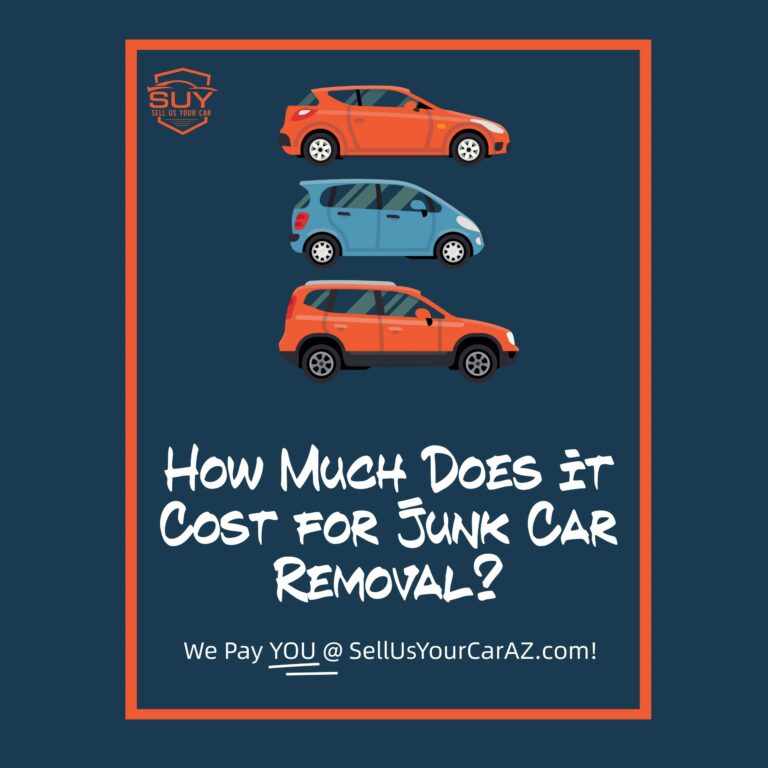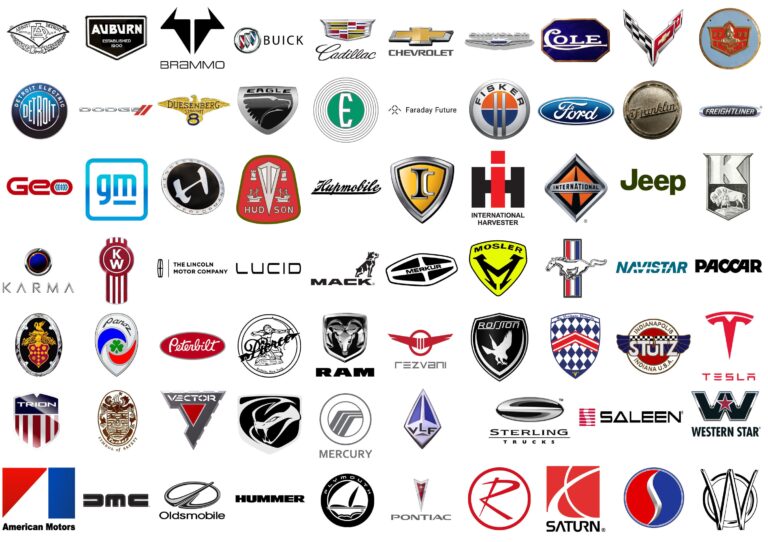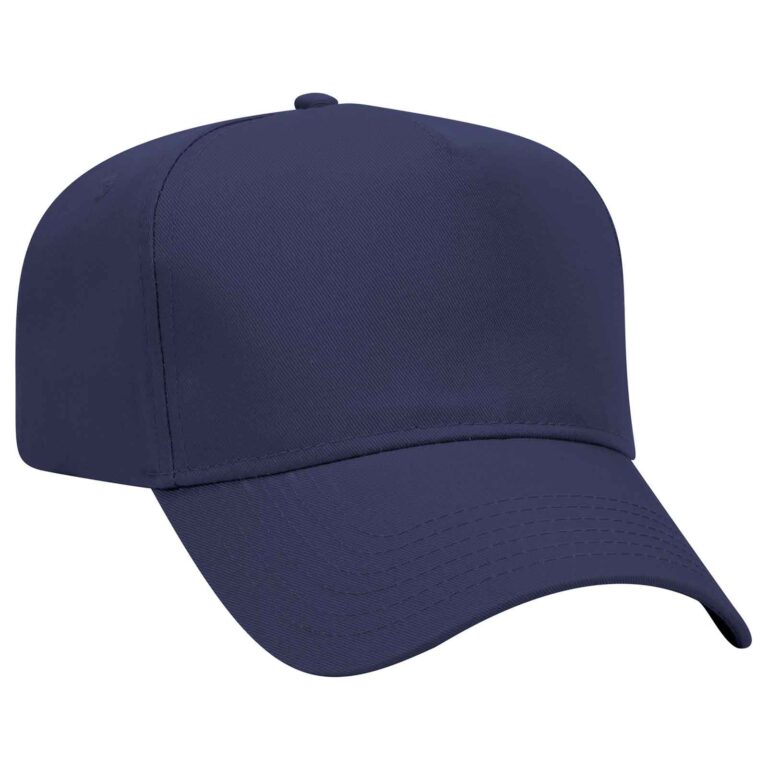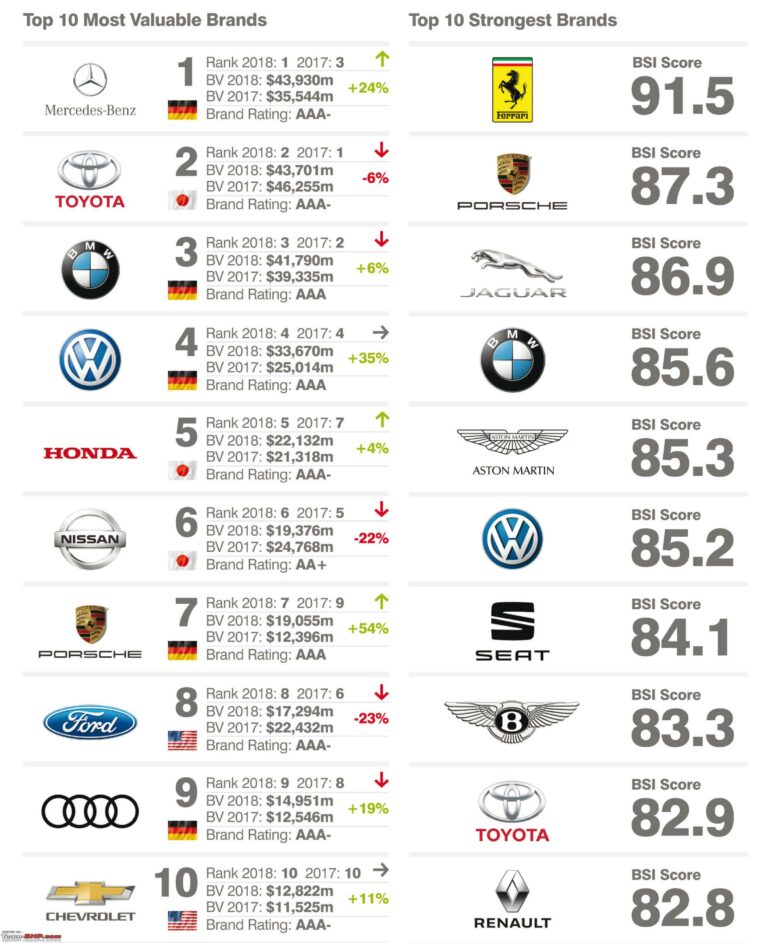Best Car Speaker Brands For Bass: Unleashing the Low-End Power in Your Ride
Best Car Speaker Brands For Bass: Unleashing the Low-End Power in Your Ride cars.truckstrend.com
The rumble of a perfectly executed bassline, the visceral thump of a kick drum, the immersive depth of a movie soundtrack – these are the hallmarks of a truly engaging audio experience. In the confined space of a car, achieving powerful, clean, and articulate bass is often the holy grail for audiophiles and casual listeners alike. Stock car audio systems typically fall short in delivering this crucial low-frequency foundation, leaving music sounding thin, flat, and lifeless. This is where dedicated car speaker brands renowned for their bass capabilities come into play.
Understanding the importance of robust bass goes beyond just making your car rattle. It’s about bringing music to life, providing the emotional weight that defines genres from hip-hop and electronic dance music to rock and classical. Good bass adds realism, dimension, and a sense of presence that transforms a simple commute into an immersive sonic journey. But with countless brands and technical specifications, navigating the world of car audio can be daunting. This comprehensive guide will delve into the best car speaker brands for bass, offering practical advice and insights to help you choose the perfect setup for your vehicle.
Best Car Speaker Brands For Bass: Unleashing the Low-End Power in Your Ride
Understanding Car Audio Bass: More Than Just "Boom"
Before diving into specific brands, it’s essential to understand what "bass" truly means in car audio. It’s not merely about sheer loudness or a distorted "boom." High-quality bass is characterized by its depth, impact, clarity, and the ability to reproduce low frequencies accurately without muddiness or distortion.
Bass frequencies typically range from 20 Hz (the lowest human hearing can perceive) up to around 250 Hz. Within this range, we often differentiate:
- Sub-bass (20-60 Hz): The very lowest frequencies, felt more than heard, providing the foundation and rumble. This is primarily handled by subwoofers.
- Mid-bass (60-250 Hz): The punchy, impactful bass that gives drums their snap and bass guitars their distinct notes. This can be handled by dedicated mid-bass drivers in component speaker sets or larger full-range speakers.
Standard factory speakers, often made with inexpensive materials and limited power handling, simply cannot move enough air to produce these lower frequencies effectively. To achieve truly satisfying bass, you typically need:

- Dedicated Woofers/Subwoofers: Designed specifically to reproduce low frequencies.
- Sufficient Power: An external amplifier is almost always necessary to drive bass speakers to their full potential.
- Proper Enclosure: Especially for subwoofers, the enclosure design significantly impacts sound quality and output.
- Sound Deadening: Crucial for preventing rattles, reducing road noise, and allowing the bass to be heard and felt cleanly.

Key Factors to Consider When Choosing Bass Speakers
Selecting the right bass speakers involves more than just picking a brand. Several technical specifications and considerations will dictate the final sound quality and output.
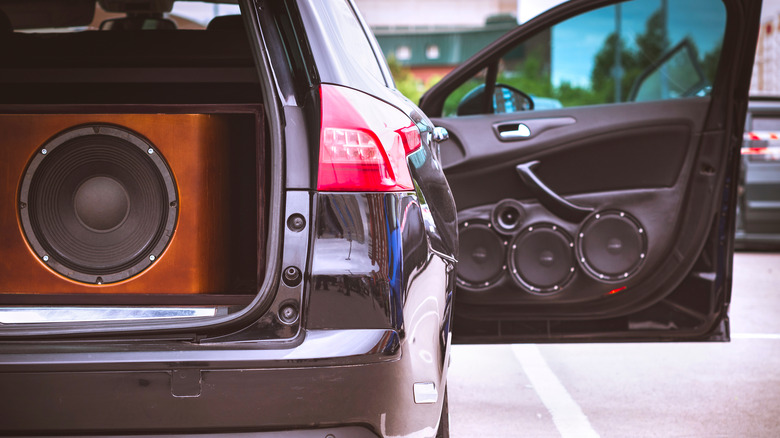
Speaker Type:
- Coaxial Speakers: All speaker elements (woofer, tweeter, sometimes midrange) are combined in one unit. Simpler to install, but offer less precise imaging. Good for upgrading stock speakers, providing a noticeable bass improvement over factory units.
- Component Speakers: Separate woofers, tweeters, and external crossovers. Offer superior sound quality, imaging, and often better mid-bass due to dedicated drivers. More complex to install.
- Subwoofers: Dedicated drivers for sub-bass frequencies (typically 8" to 15" or larger). Essential for deep, impactful bass. Can be passive (requiring an external amp) or active/powered (built-in amp).
-
Size: Larger speakers and subwoofers generally move more air, resulting in deeper and louder bass. Common sizes for full-range/component woofers are 6.5" and 6×9". Subwoofers typically come in 10", 12", and 15" sizes. Choose a size that fits your vehicle and your bass preferences (e.g., a 10" for tight, punchy bass; a 12" or 15" for deep, rumbling bass).
-
Power Handling (RMS vs. Peak):
- RMS (Root Mean Square): The continuous power a speaker can handle reliably. This is the most important rating.
- Peak Power: The maximum power a speaker can handle for very short bursts. Less relevant for sustained performance.
- Always match your speaker’s RMS power handling with your amplifier’s RMS output for optimal performance and longevity.
-
Sensitivity (dB): Measures how efficiently a speaker converts power into sound. A higher dB rating means the speaker will play louder with less power. For bass, a lower sensitivity might be acceptable if you plan to use a powerful amplifier.
-
Frequency Response: The range of frequencies a speaker can reproduce. For bass, look for speakers that extend to lower frequencies (e.g., 40 Hz for full-range, 20 Hz or lower for subwoofers).
-
Impedance (Ohms): The speaker’s electrical resistance. Most car speakers are 2-ohm or 4-ohm. Ensure your amplifier is stable at the speaker’s impedance. Lower impedance (e.g., 2-ohm) generally draws more power from the amplifier, leading to higher output.
-
Enclosure Type (for Subwoofers):
- Sealed: Offers tighter, more accurate, and musical bass. Requires more power for the same output as a ported box.
- Ported (Vented): Produces louder, deeper bass at specific frequencies. More efficient but can be less accurate and larger.
- Bandpass: Offers very high output at a narrow frequency range, but can sound "boomy" and less versatile.
Top Car Speaker Brands Renowned for Bass
Many brands offer excellent car audio products, but some have consistently proven themselves in delivering outstanding bass performance.
-
JL Audio: Often considered the gold standard for car audio subwoofers. JL Audio is renowned for producing incredibly accurate, deep, and powerful bass that remains musical and controlled. Their W-series subwoofers (W3, W6, W7) are legendary. They also make excellent component speakers that offer solid mid-bass.
- Why for Bass: Unparalleled engineering, superior cone materials, patented technologies (like Elevated Frame Cooling) for high power handling and excursion. Known for both sound quality (SQ) and sound pressure level (SPL) performance.
-
Kicker: A household name in car audio, Kicker is synonymous with raw power and high-output bass. Their subwoofers (CompR, CompRT, L7S) are designed to hit hard and loud, making them a favorite for those who want to feel the bass. They also offer full-range and component speakers with robust bass response.
- Why for Bass: Focus on high excursion, durable construction, and efficient power handling to deliver impactful, aggressive bass. Great for SPL enthusiasts.
-
Rockford Fosgate: With a legacy spanning decades, Rockford Fosgate delivers powerful, reliable, and durable car audio components. Their Punch and Power series subwoofers are known for their ability to take a beating and still deliver strong, articulate bass. Their component speakers also offer excellent mid-bass.
- Why for Bass: Robust build quality, high power handling, and a reputation for producing consistently strong and punchy bass across their product lines.
-
Alpine: Alpine offers a wide range of car audio products, from head units to amplifiers and speakers. Their subwoofers, particularly the Type-R and Type-X series, are highly regarded for their balance of clean sound quality and impressive output. Alpine’s component speakers also tend to have a strong, clear mid-bass punch.
- Why for Bass: Excellent balance of sound quality and power, innovative designs, and a focus on clarity even at high volumes.
-
JBL: A venerable name in audio, JBL brings its expertise in professional and home audio to the car environment. Their car speakers and subwoofers offer a fantastic balance of performance and value. JBL subwoofers (e.g., Stage, Club series) deliver punchy and respectable bass, while their component speakers often impress with their mid-bass capabilities.
- Why for Bass: Consistent sound profile, good efficiency, and strong low-frequency response for the price point. Often a great choice for those seeking a significant upgrade without breaking the bank.
-
Pioneer: Known for their widespread availability and reliable performance, Pioneer offers a diverse range of car speakers and subwoofers that deliver solid bass. Their TS-W series subwoofers are popular for their deep, satisfying low-end, and many of their full-range speakers provide a noticeable improvement in bass over factory units.
- Why for Bass: Good value, consistent performance, and a wide array of options to suit different budgets and bass preferences.
-
Infinity: Sharing technology with JBL (both are Harman International brands), Infinity speakers often provide a similar warm and detailed sound profile with excellent bass response. Their Kappa and Reference series speakers are known for their efficiency and strong mid-bass, while their subwoofers offer clean, musical low frequencies.
- Why for Bass: Efficient design (often 2-ohm impedance), robust construction, and a clear, well-defined bass output.
Optimizing Your Car Audio System for Maximum Bass
Choosing the best speakers is only half the battle. To truly unleash their bass potential, proper system integration and optimization are crucial.
- Amplification is Key: Dedicated bass speakers, especially subwoofers, require significantly more power than a head unit can provide. A good external amplifier is non-negotiable for powerful, clean bass. Match the amplifier’s RMS output to your speaker’s RMS power handling.
- Upgrade Your Head Unit (Optional but Recommended): An aftermarket head unit often provides a cleaner signal, higher pre-out voltage, and more advanced audio controls (like built-in crossovers, equalization, and time alignment) that can drastically improve bass performance and overall sound quality.
- Sound Deadening: This is one of the most overlooked yet critical steps for bass improvement. Applying sound deadening material (butyl rubber with foil) to doors, trunk, and other vibrating panels reduces rattles, prevents sound cancellation, and allows the bass to be heard and felt more effectively. It creates a more stable acoustic environment for your speakers.
- Proper Enclosure Design (for Subwoofers): The subwoofer enclosure is as important as the subwoofer itself. A poorly designed box will make even the best subwoofer sound bad. Whether sealed or ported, ensure the enclosure’s volume and tuning are appropriate for your specific subwoofer model.
- Crossover Settings: Use your amplifier or head unit’s crossover settings to direct the right frequencies to the right speakers. For subwoofers, use a low-pass filter (LPF) to ensure they only play bass frequencies (e.g., 80-100 Hz and below). For full-range or component speakers, use a high-pass filter (HPF) to prevent them from trying to play frequencies too low for them, which can cause distortion and damage.
- Wiring and Power: Use appropriate gauge power and ground wires for your amplifier to ensure it receives stable power. Poor wiring can lead to voltage drops, reduced power output, and distorted bass.
- Professional Tuning: Once installed, proper tuning of your amplifier gains, crossover points, and potentially equalization can make a world of difference in the final sound. If unsure, consider professional tuning.
DIY vs. Professional Installation: What to Consider
- DIY: Can save money and offers a rewarding learning experience. Suitable for basic upgrades like coaxial speaker replacements or simple powered subwoofer installations. Requires research, basic tools, and patience.
- Professional Installation: Recommended for complex component speaker setups, multiple amplifiers, custom subwoofer enclosures, or intricate wiring. Ensures optimal performance, proper safety, and often comes with a warranty on labor. While more expensive upfront, it can prevent costly mistakes and provide a superior listening experience.
Table: Representative Price Ranges for Best Car Speaker Brands for Bass
This table provides approximate price ranges for common bass-oriented products from the mentioned brands. Prices can vary significantly based on specific models, sales, retailers, and whether you’re buying individual components or complete packages.
| Brand | Typical Product Type (Example) | Approximate Price Range (USD) | Key Bass Characteristic |
|---|---|---|---|
| JL Audio | 12" W3v3 Subwoofer | $250 – $450 | Highly accurate, deep, musical bass; premium quality |
| Kicker | 12" CompR Subwoofer | $150 – $250 | High-impact, loud, aggressive bass; great SPL |
| Rockford Fosgate | 12" Punch P3 Subwoofer | $180 – $300 | Powerful, durable, punchy and articulate bass |
| Alpine | 12" Type-R (SWR-12D2/D4) Subwoofer | $200 – $350 | Balanced, clean, strong bass with good output |
| JBL | 12" Stage 1220B Subwoofer (enclosed) | $100 – $200 | Excellent value, punchy and clear bass for the price |
| Pioneer | 12" TS-W3003D4 Subwoofer | $80 – $150 | Reliable, deep bass, great entry-level performance |
| Infinity | 6.5" Kappa Component Speakers | $180 – $300 | Strong, clear mid-bass; efficient design |
| Polk Audio | 6.5" DB+ Component Speakers | $100 – $180 | Natural, balanced sound with good, clean mid-bass |
Disclaimer: Prices are approximate and subject to change. They represent the cost of the speaker/subwoofer itself, not including enclosures, amplifiers, or installation.
Conclusion
Achieving exceptional bass in your car audio system is a journey that combines selecting the right components with meticulous installation and tuning. By understanding the core principles of bass reproduction and choosing from the reputable brands discussed – like JL Audio for precision, Kicker for raw power, Rockford Fosgate for durability, Alpine for balance, and JBL/Pioneer/Infinity for great value – you can dramatically elevate your in-car listening experience. Remember that the best bass is not just loud; it’s clean, accurate, and deeply engaging, transforming every drive into a concert on wheels. Invest wisely, install carefully, and prepare to feel the music like never before.
Frequently Asked Questions (FAQ)
Q1: Do I absolutely need a subwoofer for good bass?
A1: For truly deep, impactful, and satisfying sub-bass, a dedicated subwoofer is highly recommended. While good component speakers can provide excellent mid-bass, they cannot reproduce the lowest frequencies with the same authority and depth as a subwoofer.
Q2: Can I get good bass just by upgrading my door speakers?
A2: Yes, upgrading your factory door speakers to higher-quality coaxial or component speakers will significantly improve mid-bass and overall sound clarity. However, for true sub-bass (the kind you feel in your chest), a dedicated subwoofer will still be necessary.
Q3: What’s the difference between RMS and Peak power? Which is more important?
A3: RMS (Root Mean Square) power is the continuous power a speaker can handle over extended periods without damage. Peak power is the maximum power it can handle for very brief bursts. RMS power is the much more important specification for matching speakers to an amplifier and ensuring reliable performance.
Q4: How many watts (RMS) do I need for good bass?
A4: This depends on the speaker’s sensitivity, your desired volume, and the size of your vehicle. For a single 10" or 12" subwoofer, 250-500 watts RMS is a good starting point for strong, noticeable bass. For very loud or multiple subwoofers, you might need 1000 watts RMS or more.
Q5: Is sound deadening really necessary for better bass?
A5: Yes, sound deadening is incredibly important. It prevents rattles and vibrations from your car’s panels, which can color and distort the bass. It also helps contain the sound waves, making the bass sound tighter, louder, and more impactful by reducing cancellations.
Q6: What’s the best subwoofer size for bass? 10", 12", or 15"?
A6: There’s no single "best" size, as it depends on your preferences and available space.
- 10-inch: Often preferred for tighter, punchier bass and better integration with other speakers, requiring less enclosure space.
- 12-inch: The most popular size, offering a good balance of depth, punch, and output, suitable for most music genres.
- 15-inch: Delivers the deepest, loudest, and most room-shaking bass, but requires a large enclosure and significant power.
Q7: Should I choose a sealed or ported enclosure for my subwoofer?
A7:
- Sealed Enclosure: Produces very accurate, tight, and musical bass. It rolls off bass more gently at lower frequencies but requires more power. Ideal for sound quality (SQ) oriented listeners.
- Ported Enclosure: Offers louder output and deeper bass at specific frequencies, making it more efficient. Can sound "boomy" if not properly tuned. Ideal for those prioritizing loud, impactful bass (SPL).

